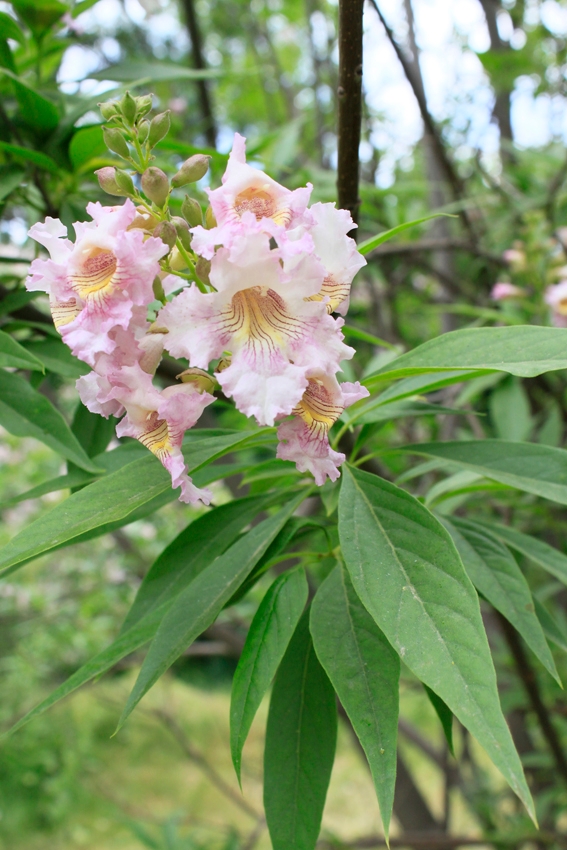Sep 13, 2024
If you don't have a fall or winter garden, prepare for spring planting. Chitalpas are decidious trees that bloom for several months during the summer. They can be planted this time of year. (Photo: Wikimedia Commons)
Chitalpas are decidious trees that bloom for several months during the summer. They can be planted this time of year. (Photo: Wikimedia Commons)
Tasks
- Repair damaged spots in cool-season lawns (such as tall fescue) by scratching with a rake, seeding and covering with mulch. Keep moist until the new grass seedlings are well established. Warm-season lawns like Bermuda grass will soon be entering their dormant season, so bare patches should be covered with mulch to discourage winter weeds.
- Use spent vegetable plants and summer annuals to start a compost pile.
Pruning
- Divide and thin perennials.
- Sharpen your pruning tools in preparation for fall pruning.
Fertilizing
-
To avoid a flush of new growth late in the growing season, do not apply fertilizer to citrus, avocados or other frost?tender plants.
Planting
- If the weather is cool enough, plant spring bulbs and annuals.
- Annuals: calendula, Canterbury bell (Campanula), pansy (Viola).
- Perennials: catmint (Nepeta), dianthus, fortnight lily (Dietes), Lantana.
- Fruits and vegetables: broccoli, cauliflower, parsley.
- Trees, shrubs, vines: barberry (Berberis), redbud (Cercis), fringe tree (Chionanthus), chitalpa.
- Tender leafy vegetables are best planted later in the month, and even then may require daily watering until they are well established.
Enjoy now
- Annuals and perennials: fibrous begonia.
- Bulbs, corms, tubers: cyclamen.
- Trees, shrubs, vines: beautyberry (Callicarpa), bottlebrush (Callistemon), chitalpa.
- Fruits and vegetables: garlic, gourds, grapes, peaches.
- Fall color: Raywood ash (Fraxinus angustifolia), maidenhair (Ginkgo biloba).
Things to ponder
- Cover remaining tomato and pepper plants with a garden blanket to extend the harvest season into November.
- Limit the size of fall vegetable gardens to avoid over-production. Plant only the varieties that you know you will use and enjoy, or that you can share with others.